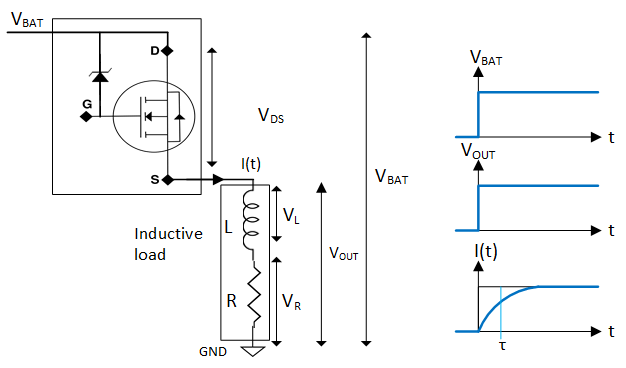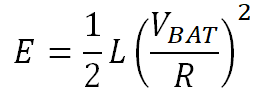SLVAE30E February 2021 – March 2021 TPS1H000-Q1 , TPS1H100-Q1 , TPS1H200A-Q1 , TPS1HA08-Q1 , TPS25200-Q1 , TPS27S100 , TPS2H000-Q1 , TPS2H160-Q1 , TPS2HB16-Q1 , TPS2HB35-Q1 , TPS2HB50-Q1 , TPS4H000-Q1 , TPS4H160-Q1
- Trademarks
- 1Introduction
- 2Driving Resistive Loads
- 3Driving Capacitive Loads
- 4Driving Inductive Loads
- 5Driving LED Loads
- 6Appendix
- 7References
- 8Revision History
4.4 Turn-On Phase
 Figure 4-2 Inductive Load Turn-On Phase
Figure 4-2 Inductive Load Turn-On PhaseThe turn-on phase as shown in Figure 4-2 begins when the supply voltage VBAT is initially applied to an uncharged inductive load. This causes the load current to ramp up exponentially from zero. When a step voltage VBAT is applied across an uncharged inductor, the current can be calculated with Equation 29.


The time constant τ determines the slew rate of the current and is a function of the load resistance and inductance. The load profile also determines the steady state current ILOAD,DC through Equation 31, which is approximately reached at time t = 3τ and the stored magnetic energy E through Equation 32.


When using a Smart High Side Switch that includes open load detection, make sure that the switch waits long enough for the current to ramp before declaring an open load. Also ensure that the Smart High Side Switch can handle the DC current flow. If the current is above the data sheet specification of the device it can cause high power dissipation inside the switch and cause a thermal shutdown.